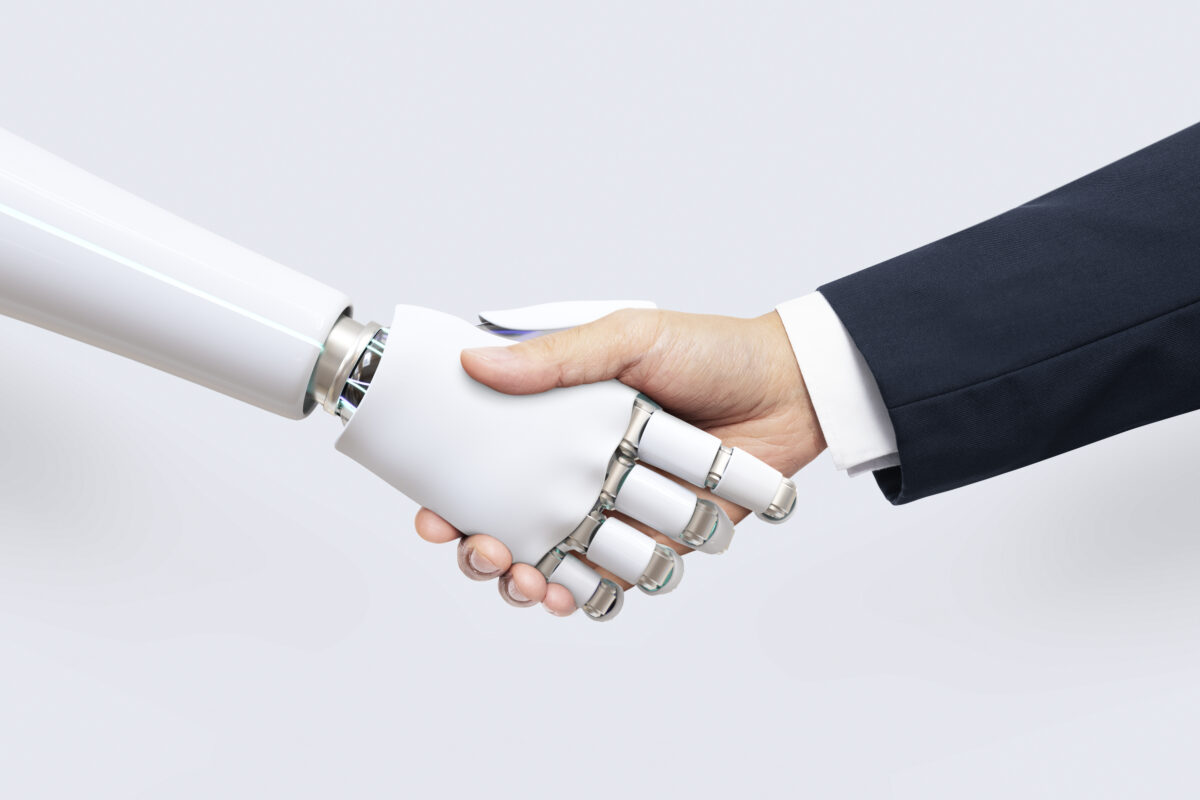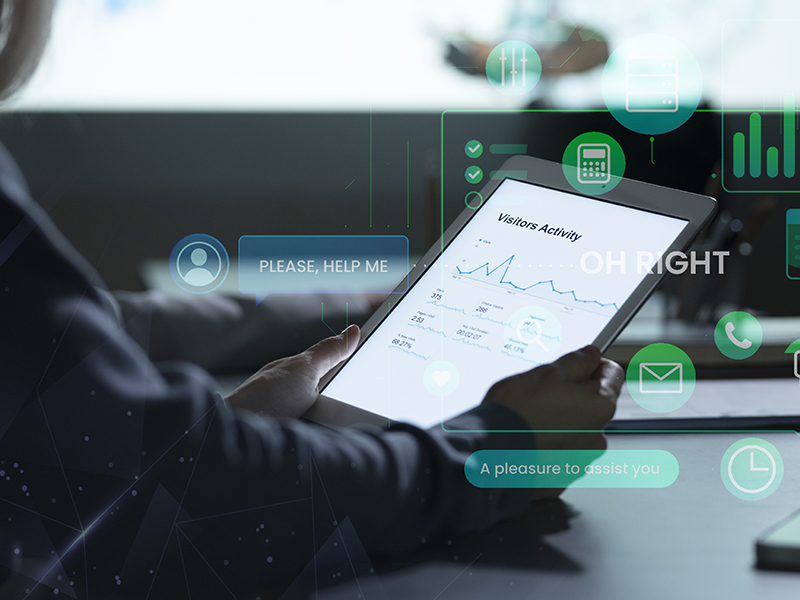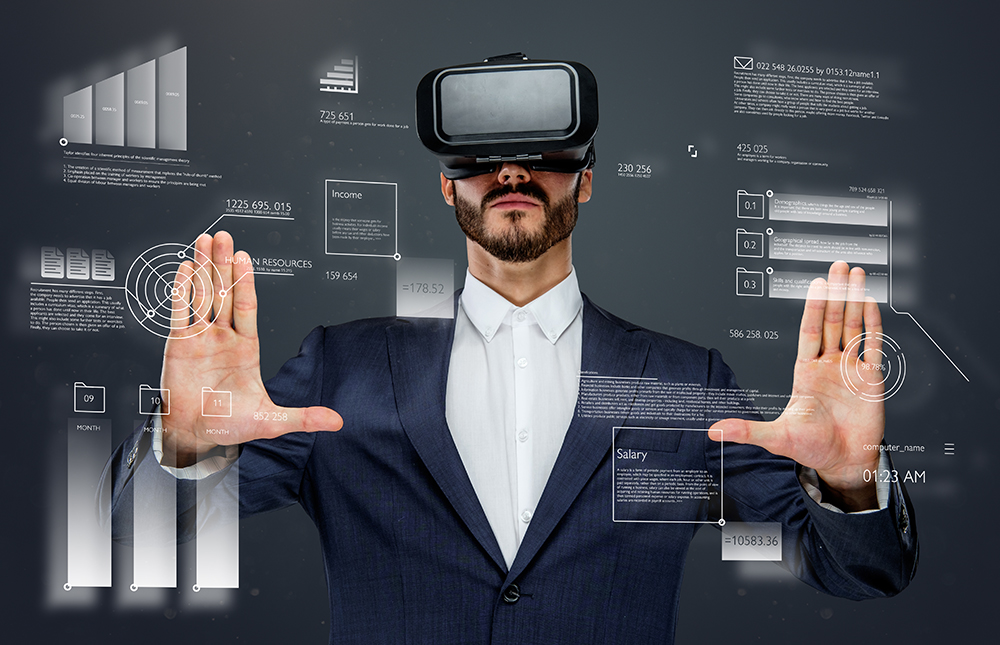In the realm of human resources, the impact of technology, particularly artificial intelligence (AI) and predictive analytics, has been profound and transformative. As businesses seek more efficient and effective ways to manage their workforce, the adoption of these technologies has become a cornerstone in reshaping HR functions. At the vanguard of this revolution is KABi… Continue reading Transforming Human Resources: How AI and Predictive Analytics are Shaping Consulting Services
Category: blogs
From Data to Decisions: The Impact of AI and Predictive Analytics on Human Capital Consulting
In the dynamic landscape of modern business, the strategic use of data has become a pivotal element in shaping organizational success, particularly in human capital management. Artificial Intelligence (AI) and predictive analytics are revolutionizing the field, transforming raw data into valuable insights that drive smarter decisions. KABi HC Consulting, with its expertise in Human Capital… Continue reading From Data to Decisions: The Impact of AI and Predictive Analytics on Human Capital Consulting
Enhancing Human Capital Strategy with AI: A New Era in Consulting-as-a-Service
In today’s rapidly evolving business environment, the ability to adapt and innovate human capital strategies is crucial for organizational success. With the advent of artificial intelligence (AI), a new era in consulting has emerged, particularly in the field of human capital. KABi HC Consulting, with its Human Capital Consulting-as-a-Service model, is at the forefront of… Continue reading Enhancing Human Capital Strategy with AI: A New Era in Consulting-as-a-Service
The Role of AI in Enhancing Psychometric Assessments: A Closer Look at INVIEWS
Introduction As organizations strive for optimal performance and culture fit in their hiring processes, the role of AI in enhancing psychometric assessments becomes increasingly pivotal. INVIEWS, an innovative AI-powered platform, offers a sophisticated approach to understanding the multifaceted personalities and capabilities of candidates. This blog explores how AI, through INVIEWS, revolutionizes traditional psychometric assessments by… Continue reading The Role of AI in Enhancing Psychometric Assessments: A Closer Look at INVIEWS
The Art of Reading Between the Lines: Decoding Non-Verbal Cues with INVIEWS
Introduction In the nuanced world of human communication, the words we choose tell only part of the story. Much of what we communicate is conveyed non-verbally, through subtle cues like body language, facial expressions, and tone of voice. Recognizing the immense value of these cues, INVIEWS, an AI-powered psychometric video assessment platform, has mastered the… Continue reading The Art of Reading Between the Lines: Decoding Non-Verbal Cues with INVIEWS
Maximizing Candidate Potential: How INVIEWS Enhances the Selection Process with AI
Introduction Finding the ideal candidates who not only meet current job requirements but also have the potential to evolve with their roles is a significant challenge. INVIEWS, with its innovative AI-driven approach, is transforming how organizations assess and select their future employees. This blog explores how INVIEWS helps companies identify and maximize candidate potential through… Continue reading Maximizing Candidate Potential: How INVIEWS Enhances the Selection Process with AI
The Impact of Artificial Intelligence on Applicant Tracking Systems: Insights from HYRDD
In the modern recruitment landscape, artificial intelligence (AI) is revolutionizing how companies attract, screen, and hire talent. One of the most significant advancements in this domain has been the integration of AI into Applicant Tracking Systems (ATS), exemplified by HYRDD, a pioneering solution from KABi Technologies. This breakthrough is not merely a technological upgrade; it… Continue reading The Impact of Artificial Intelligence on Applicant Tracking Systems: Insights from HYRDD
How KABi’s AI Solutions Are Setting New Standards in Workforce Analytics
In an era where the digitization of human resources processes has become paramount, KABi Technologies emerges as a cornerstone of innovation, propelling the industry into uncharted territories with its sophisticated artificial intelligence solutions. This pivotal entity has ushered in a paradigm shift in workforce analytics through its triumvirate of AI-driven solutions: INVIEWS, HYRDD, and HC… Continue reading How KABi’s AI Solutions Are Setting New Standards in Workforce Analytics
Psychometric Assessments: A Use Case – Hiring Drivers for Food Delivery Companies
Imagine a bustling city with endless traffic and busy streets. As you walk down the sidewalks, you see food delivery drivers whizzing by, transporting meals from restaurants to hungry customers. These drivers are the backbone of the food delivery industry, and their performance is essential for customer satisfaction. To ensure that their drivers are up… Continue reading Psychometric Assessments: A Use Case – Hiring Drivers for Food Delivery Companies
AI’s Crystal Ball into Employee Performance
In the ever-evolving landscape of the workplace, Artificial Intelligence (AI) has emerged as a game-changer, particularly in predicting employee performance. This innovative application of AI not only promises to transform how organizations manage talent but also opens up new avenues for enhancing workforce productivity and engagement. The AI Advantage in Performance Prediction At its core,… Continue reading AI’s Crystal Ball into Employee Performance
Transforming Businesses with AI – Efficiency, Insights, and Innovation
Introduction Artificial Intelligence (“AI”) is revolutionizing the business landscape, offering organizations unprecedented opportunities for growth and transformation. This blog explores how AI transforms businesses by driving efficiency, providing valuable insights, and fostering innovation. From streamlining operations to unlocking new business opportunities, AI is reshaping industries across the globe. Driving Efficiency and Automation One of the… Continue reading Transforming Businesses with AI – Efficiency, Insights, and Innovation
Beyond Human Resources: The Future of AI-Driven Talent Acquisition
The talent acquisition field is experiencing a paradigm shift with the emergence of artificial intelligence (AI). AI-driven technologies are revolutionizing how organizations attract, assess, and hire talent. In this blog, we explore the future of talent acquisition, where AI plays a central role in streamlining processes, enhancing candidate experiences, and optimizing hiring decisions. Streamlining Recruitment… Continue reading Beyond Human Resources: The Future of AI-Driven Talent Acquisition
Fueling Creativity: The Power of Workplace Hackathons
Innovation and creativity are vital for organizations striving to stay competitive in today’s fast-paced world. In this blog, we explore the power of workplace hackathons as a catalyst for fueling creativity. By providing a dedicated space for collaboration, exploration, and experimentation, hackathons have the potential to unlock innovative solutions, foster employee engagement, and drive business… Continue reading Fueling Creativity: The Power of Workplace Hackathons
AI-Powered Employee Onboarding: Streamlining and Personalizing the Experience
In today’s fast-paced and technologically advanced world, artificial intelligence (AI) is revolutionizing various industries, including employee onboarding. This blog explores the potential of AI in streamlining and personalizing the employee onboarding process, enhancing efficiency, engagement, and productivity within organizations. Streamlining Onboarding with AI Traditionally, employee onboarding has been time-consuming and often manual for HR departments.… Continue reading AI-Powered Employee Onboarding: Streamlining and Personalizing the Experience
Hiring in the Era of the ‘gig’ Economy
The gig economy is a term used to describe the shift from full-time employment to shorter-term, on-demand jobs. It has become increasingly common for workers to move from one project to the next, often through a platform such as Upwork, Fiverr, or Freelancer. This new way of working has changed the way companies hire. For… Continue reading Hiring in the Era of the ‘gig’ Economy
Shaping the Future of Human Capital
The role of Human Capital (“HC”) has evolved significantly over the past few decades, and is now considered a vital part of any successful business. With the rapid pace of technological advancement and globalization, HC is at the forefront of helping organizations remain competitive and shape their future. In today’s digital age, HC departments need… Continue reading Shaping the Future of Human Capital
Breaking the Code of Talent Management
The concept of talent management has long been an integral part of any successful organization. It involves the identification, development, and retention of individuals with the potential to be the future leaders of an organization. Unfortunately, many organizations struggle to effectively manage their talent, leading to high turnover, underutilized potential, and reduced organizational performance. To… Continue reading Breaking the Code of Talent Management
Jobs of the Future – Reimagining the Far Future
The future of work is an ever-evolving landscape, with new technologies and changing global trends, the need for workers with unique skillsets is ever-increasing. As the global economy continues to change, the jobs of the future are likely to be very different from the jobs of today. The development of new technology and automation has… Continue reading Jobs of the Future – Reimagining the Far Future
















